
This is the revolver used with the DPX ammunition. I believe that this model is discontinued, but it was the only other .44 Special I own and the one more likely to be carried concealed for protection.
I shot the DPX over the chronograph and 10 shots yielded an average velocity of 1013 ft/sec from the 3" barrel. The lowest velocity of the string was 987 ft/sec, which exceeds Corbon's listed velocity of 950 ft/sec.
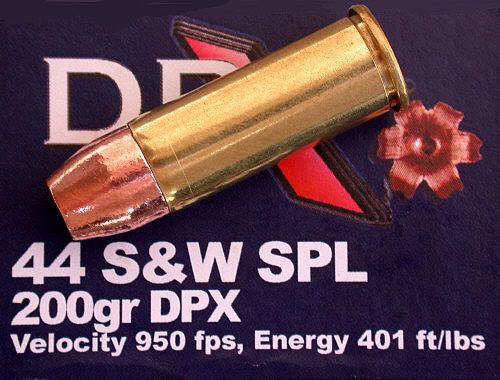
In this picture we see the listed stats for the .44 Special DPX ammunition. Every shot fired over the chronograph exceeded the nominal velocity shown.
Accuracy was more than satisfactory. I fired the revolver DA-only at 7 yards to see if the revolver was manageable. Felt recoil was not excessive at all and DA control did not suffer. At 15 and 25 yards, groups were shot slow-fire and single-action from a rest. Ammunition that will not group holds no appeal to me.
The DPX grouped very well.
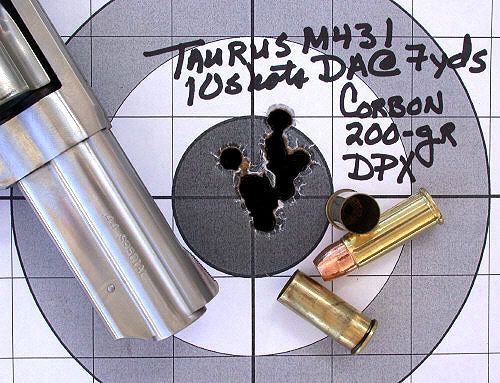
This was not shot "combat style" but in slow, deliberate double-action. I wanted to see if recoil would force me to readjust my grip and also check it for accuracy. It did not force any grip changes.
The DPX ammunition was fired in both water and super-saturated newsprint, which was soaked for 24 hours and drained 30 minutes before shooting.
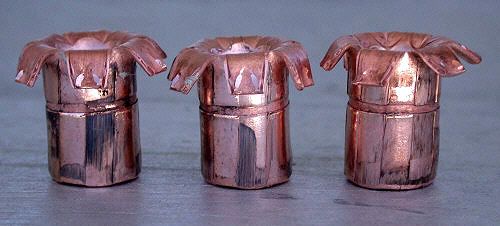
The bullet on the right was fired into water. The two on its left were shot into the soaked newsprint. Average penetration in the newsprint was 8 1/2" compared to the reported 14 1/2" in 10% ballistic gelatin.
Extraction was easy and initially I was able to literally shake fired cases from the cylinder without using the ejector rod until enough shooting dirtied the gun a bit.
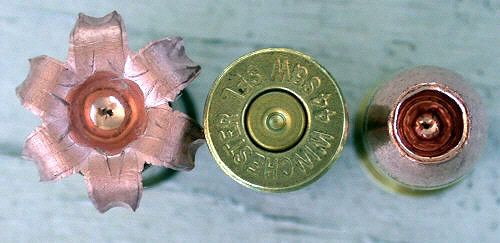
At the left is an expanded 200-gr. 44 Special DPX. They're loaded by Corbon in Winchester cases and are firmly seated. The bullet is cannulured to prevent unseating from recoil, something that could prevent the cylinder from turning. On all cartridges examined, the roll crimp was nicely done and uniform. Fired primers shows no signs of excessive pressure.
I found this ammunition to be consistent in its expansion characteristics. Ten shots were fired into the soaked newsprint and the average recovered dimensions were 0.718 x 0.722 x 0.655" tall. X-bullets, being homogeneous copper alloy through and through do not fragment nor lose but miniscule bullet weight at all when used within their expected velocity envelope. None of the expanded bullets lost enough weight to be measured.
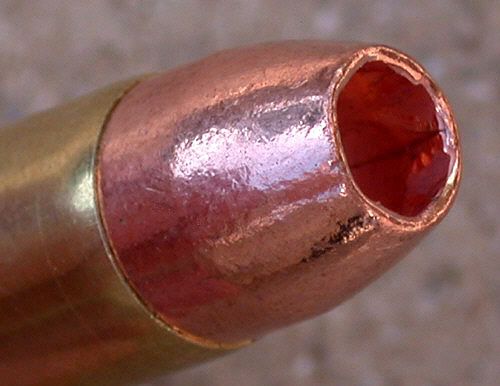
The X-bullet used in Corbon's ammunition is made completely of a copper alloy. There is neither lead core nor jacket. It is designed to expand via six stiff and sharp-edged "petals."
For those interested in a considerably more detailed report, just click on this link:
http://www.hipowersandhandguns.com/Corb ... Report.htm
I was and am extremely impressed with this ammunition in .44 Special. For factory ammunition for self-protection, this is my first choice.
For more information on this ammunition, go to http://www.corbon.com
Best.